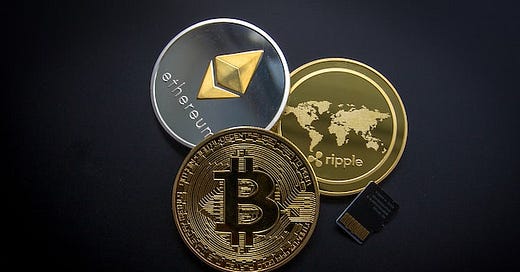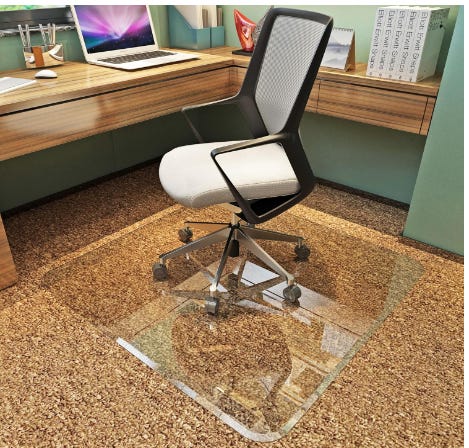Don’t look out for the Harriet Tubman $20 bill in 2020. It’s not coming, and it probably won’t see the light of day (or ATMs) until 2028. At least that appears to be the guesstimated timeline, if Treasury Secretary Steve Mnuchin has anything to do with it.
However, the security features on the $20 bill will still be updated next year.
Meanwhile customers in 2019 are walking in popular retail stores to buy items with bitcoins, bitcoin cash, ether, Gemini Dollar (GUSD), litecoin and zcash. So it’s worth wondering: With Americans’ decreasing interest in using cash for everyday use, will changing the face of any currency be worth it?
Does Cash Still Rule the Retail Industry?
In a Pew Research Center poll completed from September 24, 2018 to October 7, 2018, there were 10,683 panelists who responded to survey questions about their cash-spending habits. They were asked questions such as how often is cash used in a typical week for purchases like groceries, gas, services or meals. These were the results, compared to 2015:
● 52% said “Some” in 2018; 51% said “Some” in 2015.
● 29% said “None” in 2018; 24% said “None” in 2015.
● 18% said “All” in 2018; 24% said “All” in 2015.
The noticeable decrease in cash interest continued when asked about how concerned the participants are with keeping cash on them in case they need it. Fifty-three percent agreed in 2018; 60% agreed in 2015.
In 2018, 46% of respondents confirmed they’re not really worried about having cash on them, considering there are other ways to make purchases. That’s a significant increase from the 39% in 2015.
ADVERTISEMENT ~ Amazon
As an Amazon Affiliate, I earn a percentage for each purchase with my referral links.
In 2015, it wasn’t nearly as common (or even possible) to use cryptocurrency in stores such as Barnes & Noble, Baskin Robbins, Bed Bath & Beyond, Caribou Coffee, Crate & Barrel, Express, GameStop, Jamba Juice, Lowe’s, Nordstrom, Office Depot, OfficeMax, Petco, Regal Cinemas, Starbucks, Ulta Beauty and Whole Foods Market. Now it is.
Recommended Read: “Why black people like me are still not sold on digital currency ... yet ~ IDSC ‘BlackTechLogy’: Music artists, actors are embracing digital currency for business”
If the rollout keeps going, cashless apps like Spend will increase in popularity. Some retail locations and restaurants are already using their own mobile apps to make them cashless locations, including Argo Tea. There’s even a bit of leniency in paying. Purchase teas and croissants and bakery items all monthlong, and your credit card on file is only charged the total once per month. (You can still pay with a credit card if you don’t want the LoyalTea points though.)
But this level of convenience may be considered discriminatory and frustrating for a few.
The Downside of Cashless Retail Locations
If you’ve ever heard a financial adviser or even a relative advise you to spend cash on anything under $20, there’s a reason for that. Various reports have confirmed that only purchasing things in cash means you may spend less.
Deciding whether you really want to find an ATM that doesn’t charge exorbitant rates or buying something random to get cashback can make some consider whether that impulse purchase is really worth it.
On the other side, there are a group of people who don’t want to make the decision between cash and credit. Filing for bankruptcy and concern about higher interest rates on annual/monthly charges can deter people away from credit card purchases. Then there’s a demographic that may not even qualify to have a credit card.
Delinquent student loans, foreclosure, unpaid medical and credit card debt, debt collection judgments and wage garnishments can all affect credit scores. And with that, the common targets of these financial problems — usually minorities and/or lower-income groups — only can use cash as an option. (Even the Spend app requires a cryptocurrency account or a linked, verified banking account.)
So while cashless stores and payments may be added convenience for some, for others, it’s an obstacle course.
ADVERTISEMENT ~ Recommended Read on Amazon
How the Online Retail Industry Affects Cashless Stores
Retail stores and restaurants are fully aware that, by making their stores cashless, they’ve by default excluded a group of people. Whether that will legally matter in the long term is up for debate.
And online stores have been accepting PayPal, Venmo, Square Cash, Zelle and Google Wallet for years. Even when eBay made the decision to stop using PayPal as its primary payment mode by 2020 —after using PayPal since 2003 — the online retailer is still accepting other online payment options.
Recommended Read: “Paper, Not Plastic ~ Cash Is Making a Comeback in Online Retail”
But online retail has taken an even more unexpected term. After Amazon arguably led many brick-and-mortar stores to go out of business, the company opened 4-star stores, pickup and return stations, and Amazon Go convenience stores. Skip paying for returns in cash at a post office; now you can just return items with no cash at pickup and return stations. At retail stores like Kohl’s, you don’t even have to package them up or tape them. Amazon Go consumers pay for their items with an Amazon account. And even the supplies at a 4-star store are controlled by user reviews.
While there are still consumers who would prefer the Tubman Twenty (or other dollar bills) over cards and cryptocurrency, online and physical retailers are slowly but surely moving us in the direction to cashless. They’re not picking sides on what actual dollar bills will look like; they just prefer no cash at all, whether we want to use it or not.
(Note: This post was originally published as an Upwork freelancer for RETHINK Retail.)
Did you enjoy this post? You’re also welcome to check out my Substack columns “Black Girl In a Doggone World,” “BlackTechLogy,” “Homegrown Tales,” “I Do See Color,” “One Black Woman’s Vote” and “Window Shopping” too. Subscribe to this newsletter for the monthly post on the third Thursday.
If you’re not ready to subscribe but want to support my writing, you’re welcome to tip me for this post! I’ll buy a dark hot chocolate on you. Thanks for reading!







